
How to Use Raspberry Pi 4B (Personal): Examples, Pinouts, and Specs
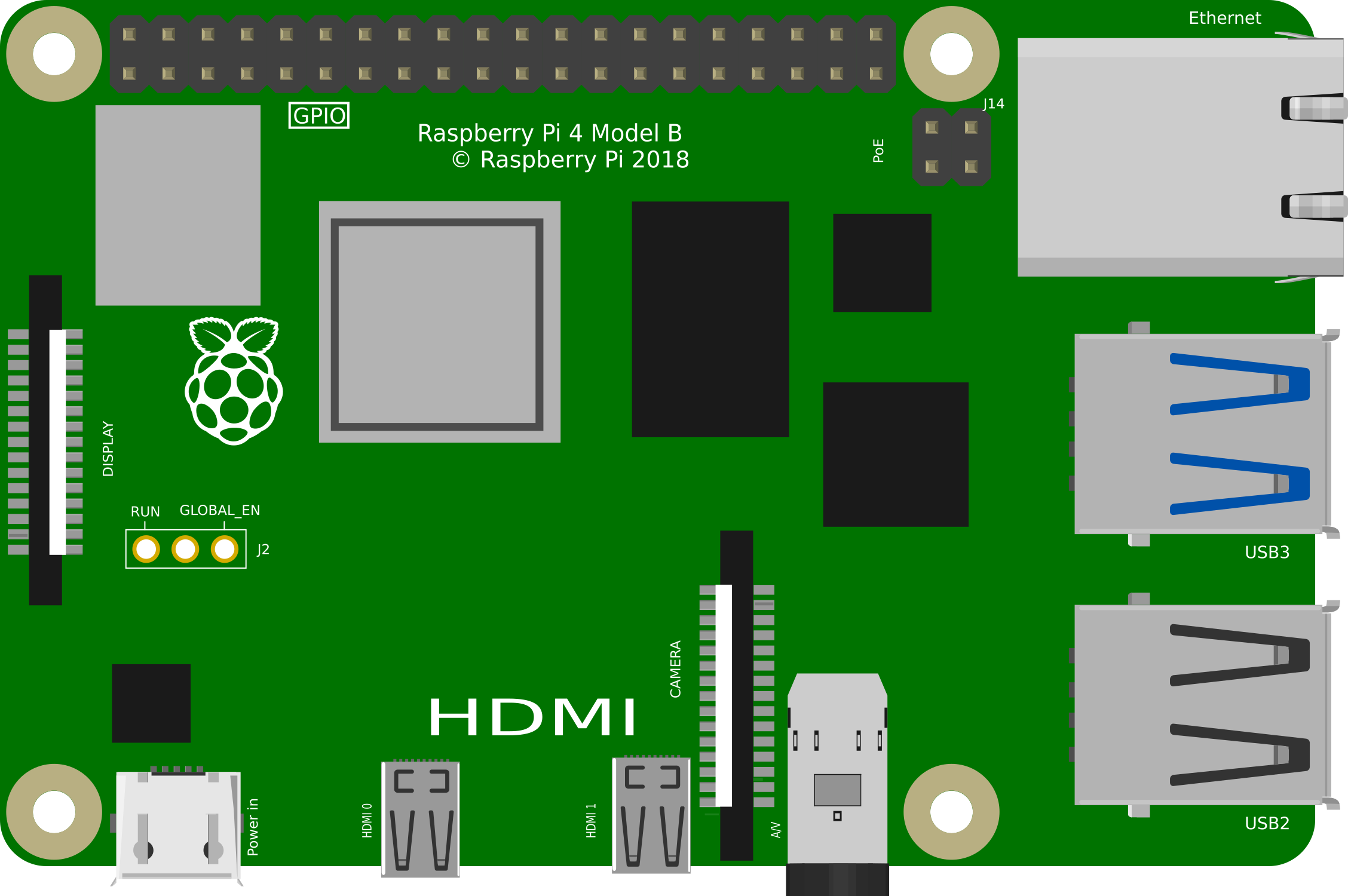
 Design with Raspberry Pi 4B (Personal) in Cirkit Designer
Design with Raspberry Pi 4B (Personal) in Cirkit DesignerIntroduction
The Raspberry Pi 4B is a compact, affordable single-board computer designed for a wide range of applications. It features a powerful quad-core processor, multiple USB ports, dual micro-HDMI outputs, and support for various operating systems, including Raspberry Pi OS. Its versatility makes it ideal for personal projects, learning programming, DIY electronics, and even as a lightweight desktop replacement.
Common applications of the Raspberry Pi 4B include:
- Home automation and IoT projects
- Media centers and streaming devices
- Robotics and embedded systems
- Learning programming languages like Python, C++, and Java
- Hosting lightweight servers (e.g., web servers, file servers)
- Gaming emulation and retro gaming setups
Explore Projects Built with Raspberry Pi 4B (Personal)
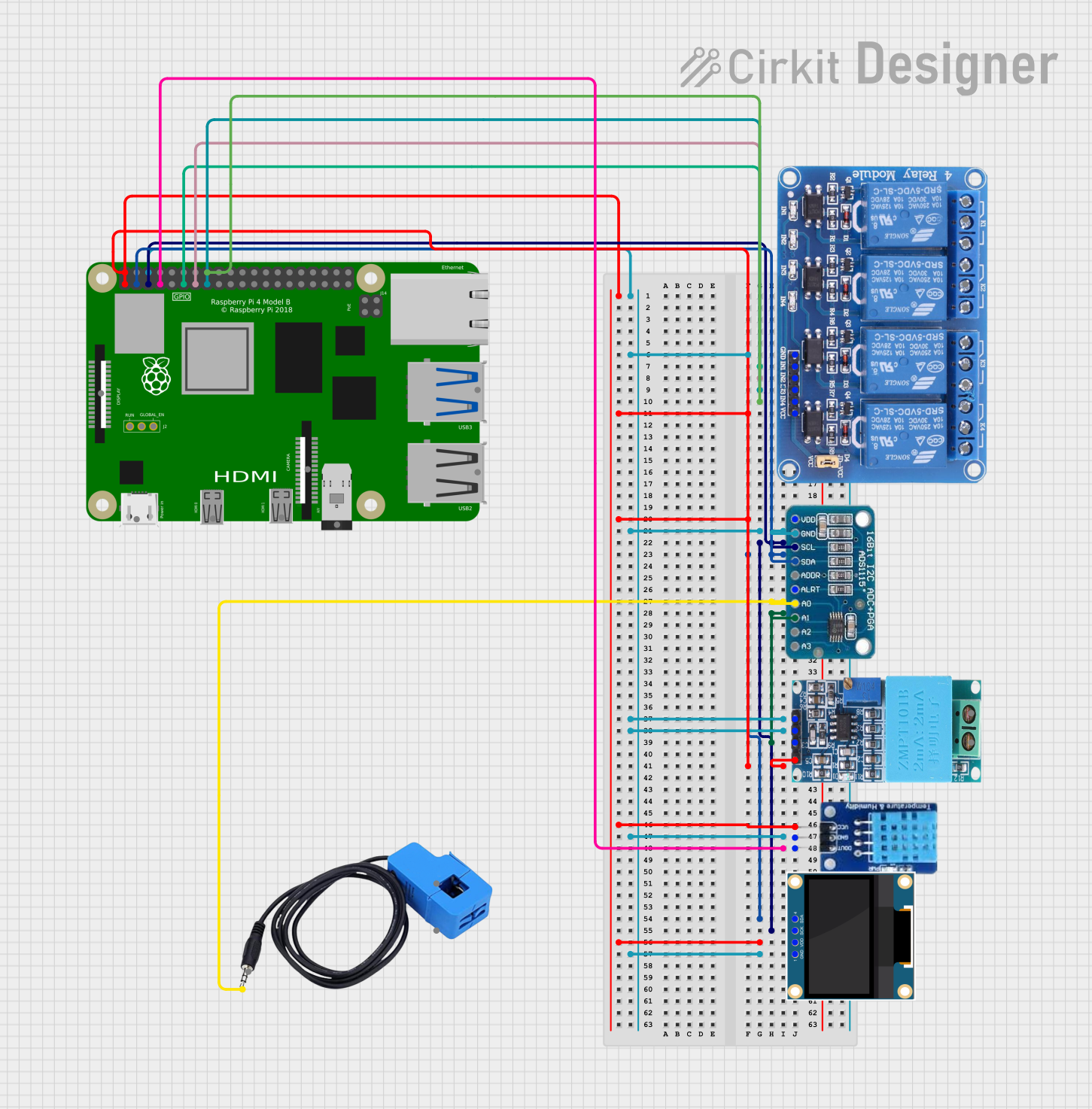
 Open Project in Cirkit Designer
Open Project in Cirkit Designer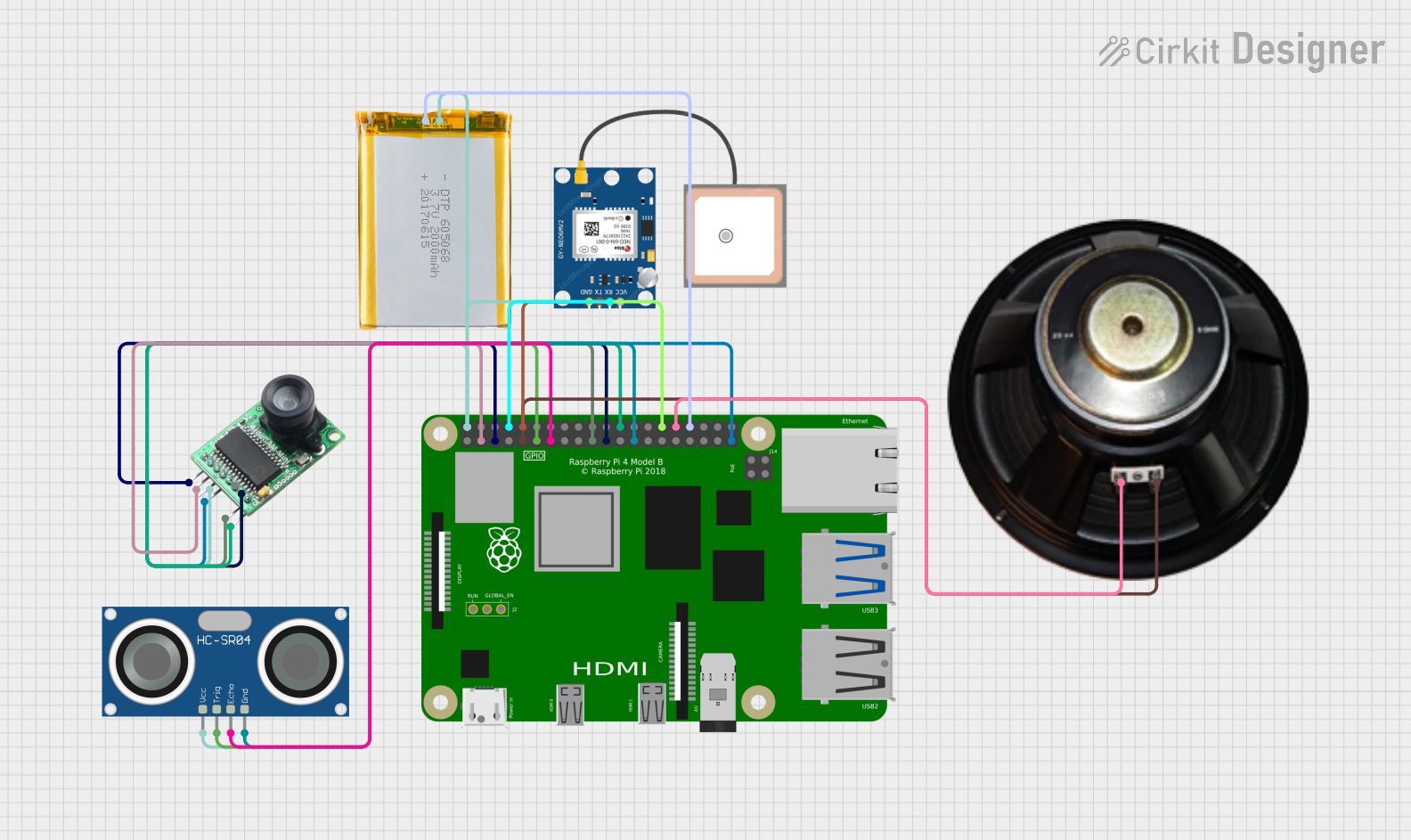
 Open Project in Cirkit Designer
Open Project in Cirkit Designer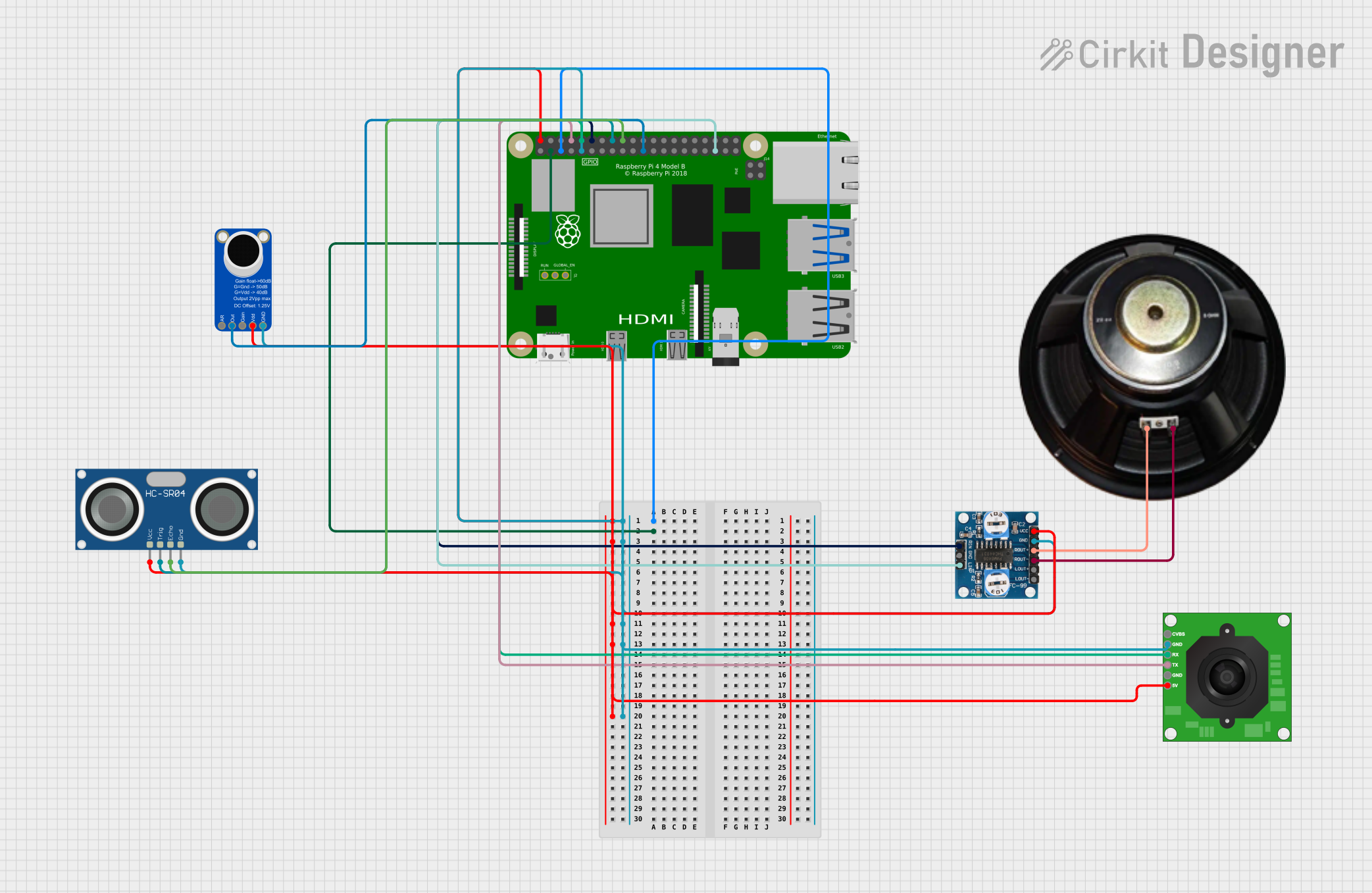
 Open Project in Cirkit Designer
Open Project in Cirkit Designer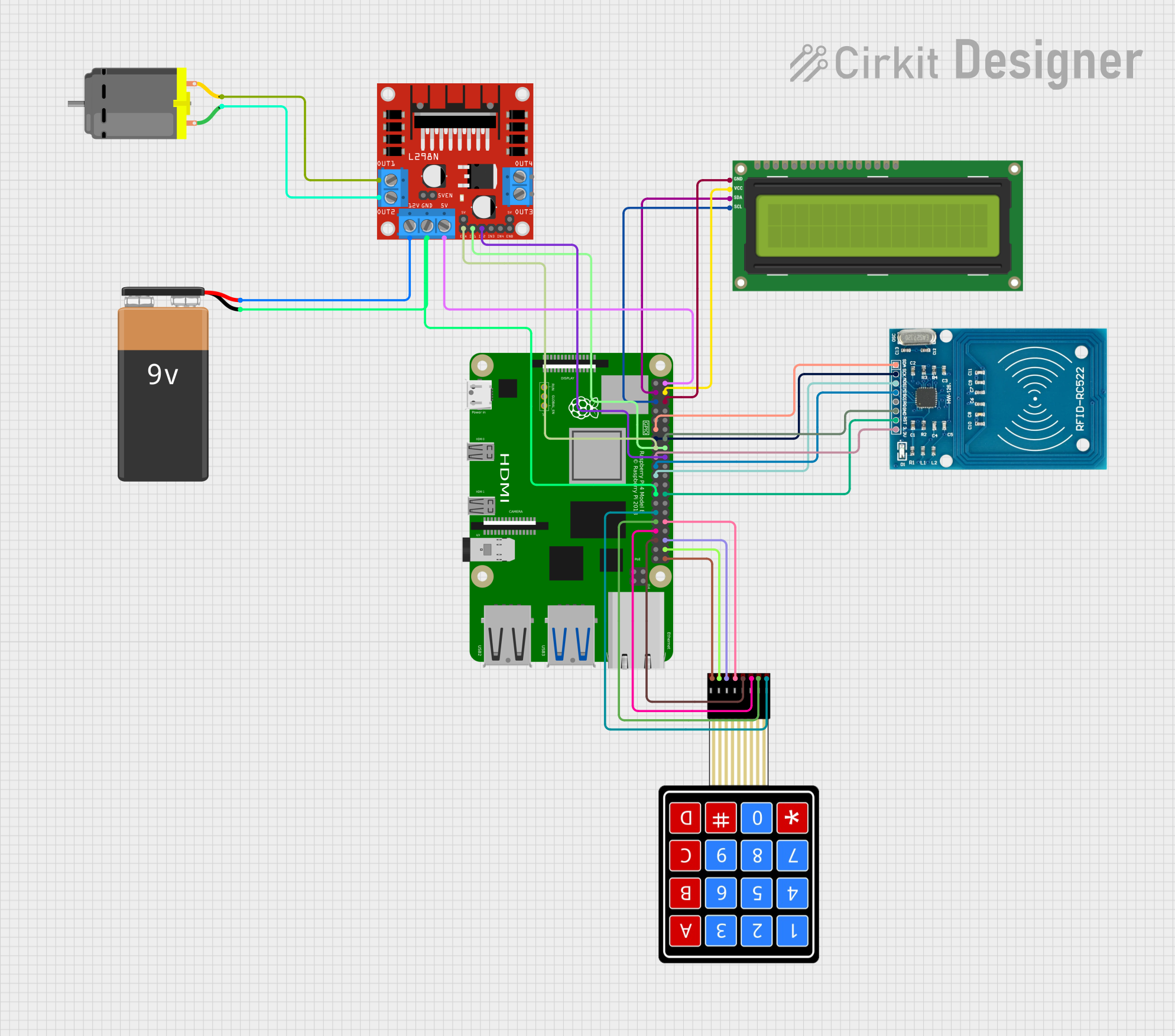
 Open Project in Cirkit Designer
Open Project in Cirkit DesignerExplore Projects Built with Raspberry Pi 4B (Personal)

 Open Project in Cirkit Designer
Open Project in Cirkit Designer
 Open Project in Cirkit Designer
Open Project in Cirkit Designer
 Open Project in Cirkit Designer
Open Project in Cirkit Designer
 Open Project in Cirkit Designer
Open Project in Cirkit DesignerTechnical Specifications
The Raspberry Pi 4B offers impressive hardware capabilities for its size and price. Below are its key technical details:
Key Specifications
| Feature | Specification |
|---|---|
| Processor | Broadcom BCM2711, Quad-core Cortex-A72 (ARM v8) 64-bit SoC @ 1.5GHz |
| RAM Options | 2GB, 4GB, or 8GB LPDDR4-3200 SDRAM |
| GPU | VideoCore VI, supporting OpenGL ES 3.0 |
| Video Output | 2 × micro-HDMI ports (up to 4Kp60 supported) |
| USB Ports | 2 × USB 3.0, 2 × USB 2.0 |
| Networking | Gigabit Ethernet, 2.4GHz/5.0GHz 802.11b/g/n/ac Wi-Fi, Bluetooth 5.0 |
| Storage | MicroSD card slot for OS and data storage |
| GPIO | 40-pin GPIO header, backward-compatible with previous Raspberry Pi models |
| Power Supply | 5V/3A via USB-C connector |
| Dimensions | 85.6mm × 56.5mm × 17mm |
GPIO Pin Configuration
The Raspberry Pi 4B features a 40-pin GPIO header for connecting external components. Below is the pinout:
| Pin Number | Pin Name | Description |
|---|---|---|
| 1 | 3.3V Power | 3.3V power supply |
| 2 | 5V Power | 5V power supply |
| 3 | GPIO2 (SDA1) | I2C Data |
| 4 | 5V Power | 5V power supply |
| 5 | GPIO3 (SCL1) | I2C Clock |
| 6 | Ground | Ground |
| 7 | GPIO4 | General-purpose I/O |
| 8 | GPIO14 (TXD0) | UART Transmit |
| 9 | Ground | Ground |
| 10 | GPIO15 (RXD0) | UART Receive |
| ... | ... | ... (Refer to official documentation for full pinout) |
Usage Instructions
Setting Up the Raspberry Pi 4B
- Prepare the MicroSD Card:
- Download the Raspberry Pi OS image from the official Raspberry Pi website.
- Use a tool like Balena Etcher to flash the OS image onto a microSD card.
- Connect Peripherals:
- Insert the microSD card into the Raspberry Pi 4B.
- Connect a keyboard, mouse, and monitor via USB and micro-HDMI ports.
- Power On:
- Connect a 5V/3A USB-C power supply to the Raspberry Pi 4B.
- The device will boot into the Raspberry Pi OS setup screen.
- Complete Initial Setup:
- Follow the on-screen instructions to configure Wi-Fi, update the OS, and set up a user account.
Using GPIO Pins with an Arduino UNO
The Raspberry Pi 4B can communicate with an Arduino UNO via GPIO pins. Below is an example of how to blink an LED connected to the Raspberry Pi's GPIO pin 17:
Python Code Example
Import the GPIO library and time module
import RPi.GPIO as GPIO import time
Set the GPIO mode to BCM (Broadcom pin numbering)
GPIO.setmode(GPIO.BCM)
Define the GPIO pin number for the LED
LED_PIN = 17
Set up the LED pin as an output
GPIO.setup(LED_PIN, GPIO.OUT)
Blink the LED in a loop
try: while True: GPIO.output(LED_PIN, GPIO.HIGH) # Turn the LED on time.sleep(1) # Wait for 1 second GPIO.output(LED_PIN, GPIO.LOW) # Turn the LED off time.sleep(1) # Wait for 1 second except KeyboardInterrupt: # Clean up GPIO settings on exit GPIO.cleanup()
Best Practices
- Use a high-quality power supply to ensure stable operation.
- Avoid connecting components directly to GPIO pins without proper resistors or protection circuits.
- Regularly update the Raspberry Pi OS to benefit from the latest features and security patches.
Troubleshooting and FAQs
Common Issues
The Raspberry Pi does not boot:
- Ensure the microSD card is properly inserted and contains a valid OS image.
- Check the power supply for sufficient voltage and current (5V/3A recommended).
No display on the monitor:
- Verify that the micro-HDMI cable is securely connected to the correct port.
- Ensure the monitor is set to the correct input source.
Wi-Fi connectivity issues:
- Check the Wi-Fi credentials and ensure the network is within range.
- Update the Raspberry Pi OS to resolve potential driver issues.
Overheating:
- Use a heatsink or fan to improve cooling, especially during heavy workloads.
- Ensure proper ventilation around the Raspberry Pi.
FAQs
Q: Can I power the Raspberry Pi 4B via GPIO pins?
A: Yes, you can power the Raspberry Pi 4B via the 5V and GND GPIO pins, but this bypasses the onboard power management and is not recommended for beginners.
Q: What operating systems are supported?
A: The Raspberry Pi 4B supports Raspberry Pi OS, Ubuntu, and other Linux-based distributions. It can also run lightweight versions of Windows 10 IoT Core.
Q: Can I use the Raspberry Pi 4B as a desktop computer?
A: Yes, with a monitor, keyboard, and mouse, the Raspberry Pi 4B can function as a lightweight desktop for web browsing, coding, and basic productivity tasks.
Q: How do I reset the Raspberry Pi 4B?
A: Simply disconnect and reconnect the power supply. There is no dedicated reset button on the board.